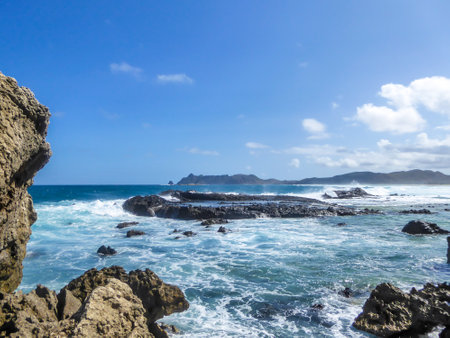Introduction to Daphne du Maurier and Cornwall
Few authors have shaped the imagination of a place as profoundly as Daphne du Maurier has with Cornwall. Her name is inseparable from the wild cliffs, rugged moorlands, and haunting seascapes that define this corner of England. Through novels such as Rebecca and Jamaica Inn, du Maurier transformed Cornwall into more than just a backdrop—it became a living, breathing character within her stories. This intrinsic connection between her literary legacy and Cornwall’s evocative landscapes invites readers and visitors alike to trace her footsteps, discovering the dramatic settings that inspired her iconic tales. As we embark on this journey along Cornwall’s Daphne du Maurier Trail, we set the stage for an exploration not only of locations but also of the enduring atmosphere that continues to captivate fans from around the world.
2. Manderley and Rebecca: Tracing Literary Footsteps
The haunting allure of Daphne du Maurier’s Rebecca is inseparable from the enigmatic estate of Manderley—a fictional manor so vividly drawn it has become a character in its own right. While Manderley may only exist in the pages of literature, its spirit was born from the rugged Cornish coastline and, most notably, the real-life Menabilly estate near Fowey. Du Maurier discovered Menabilly as a young woman, and it would later become her home and creative refuge. The atmospheric woods, crumbling boathouse, and sweeping sea views all echo through the pages of Rebecca, offering readers an immersive sense of place that is quintessentially Cornish.
For those seeking to walk in du Maurier’s footsteps, several key locations encapsulate the essence of Manderley. Below is a comparison of notable literary elements from Rebecca and their real-world counterparts in Cornwall:
Literary Element (Manderley) |
Cornish Inspiration |
Visitor Experience |
|---|---|---|
| Winding Driveway Fringed with Rhododendrons | Menabilly’s Secluded Approach | Seasonal blooms along country lanes echo novel’s atmosphere |
| The Boathouse | Polridmouth Cove & Menabilly’s Own Boathouse | Accessible via coastal walks; a favourite for du Maurier fans |
| The Estate’s Woodlands | Dense Forests Surrounding Menabilly | Public footpaths allow exploration of evocative wooded areas |
| Sweeping Clifftop Views | Cornwall’s South Coastline Near Fowey | Breathtaking vistas reminiscent of novel’s dramatic setting |
Although Menabilly itself remains privately owned and hidden from public view, its lingering presence can be felt throughout the region. Local villages such as Fowey offer glimpses into du Maurier’s daily life, while nearby beaches and headlands provide ample opportunity to soak up the wild beauty that so inspired her writing. For literary enthusiasts, tracing these Cornish landscapes not only brings Rebecca to life but also offers a profound connection to one of Britain’s most celebrated authors.

3. Jamaica Inn: Myth, Smuggling, and the Moor
Nestled on the wild expanse of Bodmin Moor, Jamaica Inn is a cornerstone of Cornwall’s literary landscape and a pivotal stop along the Daphne du Maurier Trail. The inn itself, shrouded in mist and legend, has stood as a silent witness to centuries of Cornish history—its isolated setting serving both as inspiration and dramatic backdrop for du Maurier’s iconic novel, Jamaica Inn.
The Brooding Landscape of Bodmin Moor
Bodmin Moor is more than mere scenery; it is an atmospheric presence that seeps into every page of du Maurier’s writing. The moor’s unpredictable weather, vast emptiness, and rugged beauty create a sense of foreboding and adventure—a character in its own right within her narrative. Traversing this landscape today, visitors can understand how its haunting solitude and untamed nature fuelled tales of mystery and suspense.
Smuggling Lore and Local Legend
The real-life Jamaica Inn dates back to 1750 and was reputedly a haunt for smugglers who took advantage of its remote location to conceal contraband goods. Du Maurier was captivated by these stories when she visited the inn in 1930, weaving them skilfully into her novel. Her depiction of shadowy figures moving across the moor by night draws heavily on Cornwall’s rich tradition of smuggling folklore—stories which still echo through the pub’s low-beamed rooms today.
Historical Inspiration Meets Literary Imagination
While du Maurier’s Jamaica Inn is undoubtedly fiction, its roots are anchored in tangible Cornish history. The intrigue surrounding the inn’s past—complete with tales of highwaymen, secret passages, and ghostly apparitions—provided fertile ground for her imaginative leap from local myth to enduring literary masterpiece. For those following the trail, Jamaica Inn offers a unique opportunity to connect with both the physical space that inspired du Maurier and the enduring myths that have shaped Cornwall’s identity.
Scenic Walks and Key Locations
For those eager to immerse themselves in the evocative landscape that inspired Daphne du Maurier’s enduring novels, Cornwall offers a wealth of scenic walks and heritage sites. The region’s windswept cliffs, hidden coves, and ancient woodlands not only form the dramatic backdrop for du Maurier’s fiction but also provide walkers with a truly atmospheric experience.
Essential Trails for Du Maurier Enthusiasts
The following table highlights some of the most significant routes and locations associated with du Maurier, each offering a unique insight into her literary world:
| Trail/Location | Associated Work | Key Features |
|---|---|---|
| Bodmin Moor & Jamaica Inn Trail | Jamaica Inn | Moorland vistas, smugglers paths, historic inn at Bolventor |
| Fowey Estuary Walk | Rebecca, The House on the Strand | Picturesque harbour town, du Maurier’s former home Ferryside, estuary views |
| Menabilly Estate Coastal Path | Rebecca | Secluded beaches, woodland trails, inspiration for Manderley estate |
| Polridmouth Cove Loop | Rebecca | Sheltered cove, romantic ruins, links to secretive scenes in Rebecca |
| Gribbin Head Walk | The Birds, Rebecca | Dramatic headland, Gribbin Daymark tower, panoramic coastal views |
Heritage Sites Along the Trail
Beyond its natural beauty, Cornwall is dotted with heritage landmarks intimately tied to du Maurier’s life and works. Notable stops include Jamaica Inn itself—now both a museum and pub—offering insights into local smuggling lore and the author’s personal connections. In Fowey, visitors can discover plaques and exhibits dedicated to du Maurier throughout the village; guided tours are often available from spring through autumn.
Practical Tips for Walkers
- Many trails are waymarked but can be muddy or steep; sturdy footwear is recommended.
- Cornwall’s weather can change rapidly; pack waterproofs and layers.
- Combine shorter walks (such as Polridmouth Cove) with longer coastal hikes for a flexible itinerary.
A Literary Journey Through Cornwall’s Landscape
Treading these paths offers more than just beautiful scenery—it is a chance to walk in du Maurier’s footsteps, contemplating the landscapes that shaped her imagination. Whether you are a seasoned rambler or a casual reader seeking atmosphere and inspiration, Cornwall’s Daphne du Maurier Trail promises an unforgettable journey through literature and history.
5. Local Culture and Traditional Cornish Hospitality
Exploring the Daphne du Maurier Trail is as much an immersion in Cornwall’s vibrant local culture as it is a literary journey. The villages dotted along the trail, such as Fowey and Bodinnick, offer a glimpse into the rhythm of Cornish life—a pace marked by close-knit communities, weathered fishermen’s cottages, and the ever-present scent of sea air. These settlements have retained their unique character over centuries, blending their storied past with a warm welcome extended to visitors tracing du Maurier’s footsteps.
Reflecting on Village Life
Cornwall’s villages capture the spirit that inspired du Maurier’s evocative settings. In places like Polruan or Lanteglos, one can still see villagers gathering at local pubs for an evening chat, sharing tales that echo the region’s rich oral traditions. This sense of community is palpable and adds an authentic layer to the experience—reminding visitors that these are living landscapes, not just backdrops for fiction.
Cornish Culinary Traditions
No exploration of Cornish culture would be complete without indulging in its culinary heritage. From fresh crab sandwiches by the harbour to the iconic Cornish pasty enjoyed in a cosy tearoom, local fare is integral to the hospitality found along the trail. Many inns and cafés featured in or inspired by du Maurier’s works, such as Jamaica Inn, serve up traditional dishes using regional produce—allowing travellers to savour Cornwall’s distinct flavours while soaking in its literary atmosphere.
Embracing Literary Heritage
The pride with which Cornwall’s communities embrace their connection to Daphne du Maurier is evident throughout the region. Annual festivals in Fowey celebrate her legacy with guided walks, readings, and theatrical performances, fostering a sense of shared identity rooted in literature. Locals often act as custodians of this heritage, eager to share stories about du Maurier’s life and her impact on Cornwall’s cultural landscape. This mutual appreciation between residents and visitors strengthens the bond between place and narrative, ensuring that both the writer’s legacy and Cornwall’s traditions endure.
6. Planning Your Own Daphne du Maurier Trail
Best Times to Visit Cornwall
To truly immerse yourself in the haunting beauty of Daphne du Maurier’s Cornwall, timing your visit is essential. The late spring (May to June) and early autumn (September to October) offer mild weather, fewer crowds, and the county’s famed landscapes at their most atmospheric—perfect for a literary pilgrimage. Summer months do see an influx of tourists, especially around Fowey during the annual Daphne du Maurier Festival, so advance planning is advisable if you wish to attend this celebrated event.
Transport Options: Getting Around the Cornish Coast
Cornwall’s rural charm comes with some logistical quirks. For maximum flexibility, hiring a car remains the most convenient option, allowing you to explore remote coves and moorlands immortalised in du Maurier’s novels. For those preferring public transport, regular trains run from London Paddington to Par or Bodmin Parkway, with local bus services connecting key towns such as Fowey, Bodmin, and Launceston. Cycling enthusiasts will find several scenic routes along the South West Coast Path.
Guided Tours vs. Independent Exploration
If you’re keen on expert insights and seamless navigation, numerous local companies offer guided Daphne du Maurier-themed tours. These typically include visits to Menabilly, Jamaica Inn, and Ferryside—the author’s former homes—accompanied by knowledgeable guides versed in both literary history and Cornish folklore. Alternatively, self-guided explorers can follow well-marked walking trails around Fowey and Bodmin Moor, with downloadable maps available from the National Trust and local visitor centres.
Recommended Stops Along the Trail
No du Maurier trail is complete without pausing at these iconic sites:
- Fowey: Wander the narrow streets of this riverside town where du Maurier penned many of her works.
- Menabilly: While privately owned and not open to the public, its dramatic coastline can be admired from nearby Gribbin Head.
- Jamaica Inn: This historic coaching house on Bodmin Moor offers museum exhibits dedicated to du Maurier and welcomes visitors for a traditional Cornish cream tea.
- Bodinnick: Visit Ferryside, her first Cornish home, best viewed from the water on a short ferry ride across the estuary.
- Readymoney Cove: A tranquil spot below Fowey where du Maurier once lived; perfect for reflection or a picnic.
Embracing the Cornish Spirit
A successful journey along the Daphne du Maurier Trail is about more than ticking off locations; it’s about embracing Cornwall’s rugged landscapes, warm hospitality, and rich literary heritage. Take time to chat with locals in a pub, savour a pasty on windswept cliffs, and let each stop deepen your appreciation for both du Maurier’s legacy and Cornwall itself. With thoughtful preparation and an adventurous spirit, your own literary odyssey will capture the essence of this enchanting corner of England.


